Finnish radar airspace control and on-site air defense systems: past, present and future
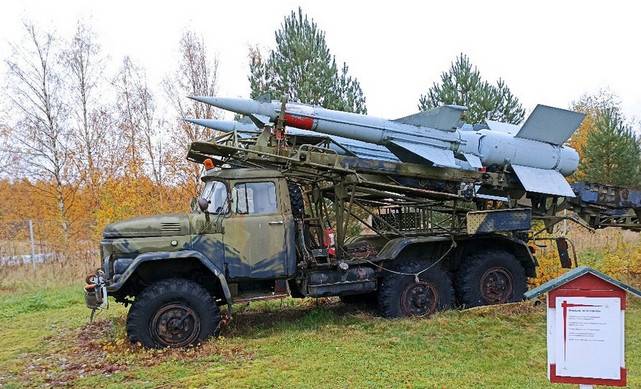
Until the early 1960s, the Finnish air defense system was basically at the level of 1944. Anti-aircraft artillery used guns from the Second World War, and outdated radars were used to control the airspace. A serious strengthening of Finnish air defense took place in the 1970s, after large-scale deliveries of Soviet radars, anti-aircraft guns and missile systems, in parallel, communications and radar equipment were purchased from Sweden, France and Great Britain. Cooperation with Russia in the field of air defense systems ended in the late 1990s, after which Finland began to acquire only Western anti-aircraft systems.
Radar means of airspace control
During the Second World War, the Finns received the German FuMG 450 Freya and FuMG 62 Wurtzberg 39 radars, which were used to detect air targets and adjust the fire of 88-mm anti-aircraft guns.
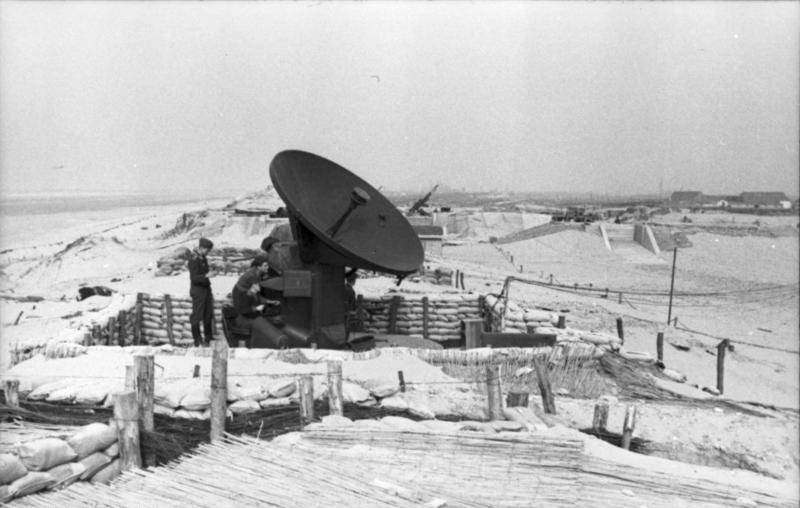
Radar FuMG 62 Wurtzberg 39
The 450 kW FuMG 20 Freya radar operated in the 162-200 MHz frequency range and could detect approaching bombers at ranges up to 180 km.
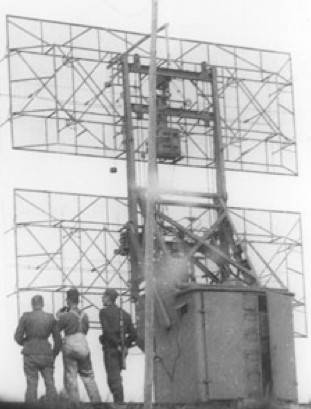
Radar FuMG 450 Freya
In total, Finland received two German Freya radars. For their time, these were quite advanced radars, but their use in the post-war period was complicated by a shortage of spare parts and not high operational reliability.
In the mid-1950s, it became clear that the badly worn German radars needed to be replaced, and Finland purchased several American AN/TPS-1E surveillance radars from the UK, which were used for airspace monitoring and air traffic control.
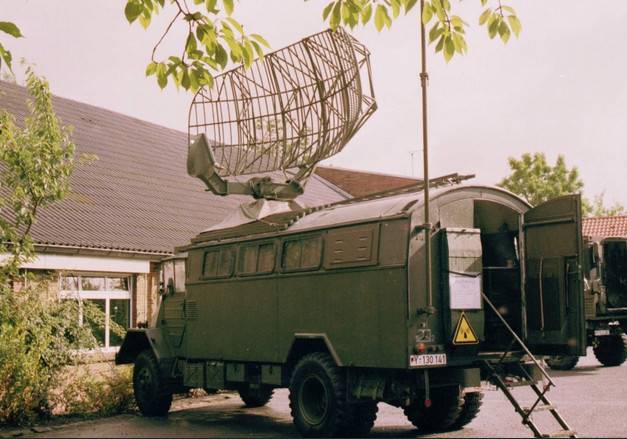
Radar AN/TPS-1E
Although the first modification of this station appeared at the end of World War II, the AN / TPS-1E radar was considered quite modern at the time of purchase. The AN / TPS-1E radar had a pulse power of up to 500 kW and operated in the 1220-1350 MHz frequency range. The detection range of a large target flying at an altitude of 10 km reached 200 km. In general, it was a successful acquisition, the AN / TPS-1E radar, which received the name Tepsu in Finland, served until the second half of the 1980s.
In 1955, a prototype of a stationary three-coordinate VRRVY radar with movable antennas operating in the vertical and horizontal plane was created in Finland.
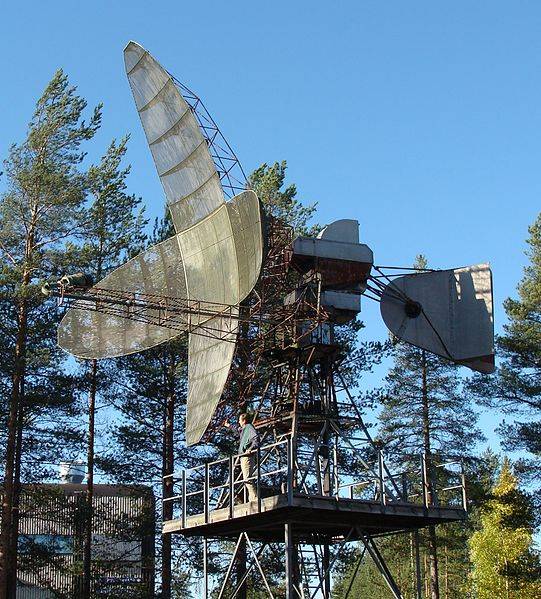
VRRVY radar antennas
The station had a pulse power of up to 400 kW, operated in the decimeter frequency range and could detect air targets at a distance of up to 270 km. A total of 10 VRRVY radars were built. Their operation continued until the end of the 1970s.
In the 1970s, deliveries of Soviet mobile two-coordinate radars P-15NM and P-18 began.
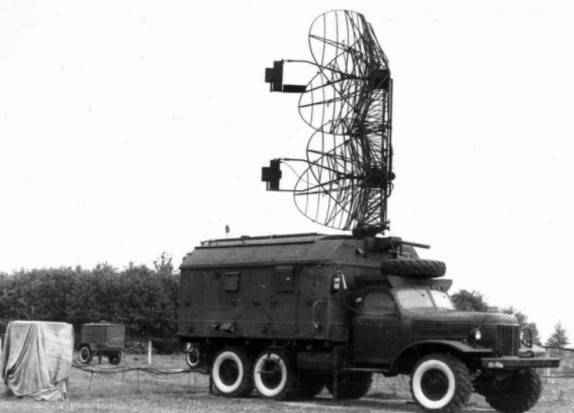
Radar P-15
The hardware-antenna complex of the P-15 low-altitude radar is located on the ZiL-157 cargo base. The decimeter range radar with a pulse power of 270 kW was able to control the air situation within a radius of 140 km. An experimental calculation ensured the deployment of the station in 10 minutes.
The P-18 meter range radar was a further development option for the widespread P-12 station and was distinguished by a new element base, increased performance and more comfortable working conditions for operators.
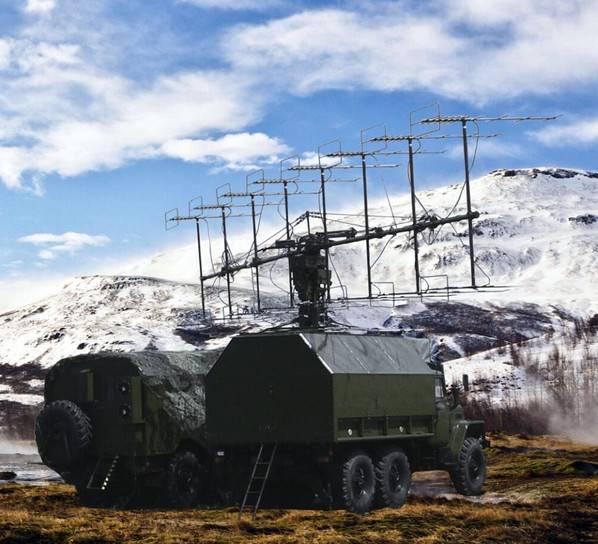
Radar P-18
The station is based on two Ural-375 vehicles. On one side there is a van with electronic equipment and operator workplaces, on the second - an antenna-mast device.
In Finland, the P-18 radars were used as standby stations. The detection range strongly depended on the altitude of the air target. So, at an altitude of 20 km, a fighter-type target, in the absence of organized interference, could be detected at a distance of 260 km, and at an altitude of 0,5 km - 60 km.
The operation of Soviet-made mobile radars continued until the end of the 1990s, after which they were replaced by the Giraffe 100 and Giraffe Mk IV radars purchased from Sweden. Radars with an antenna on a telescopic mast are placed on the chassis of Sisu SK 242 off-road trucks and Sisu Pasi XA-185 armored personnel carriers. Radars on a cargo base are intended for use in object air defense, and on an armored personnel carrier chassis - for military air defense.
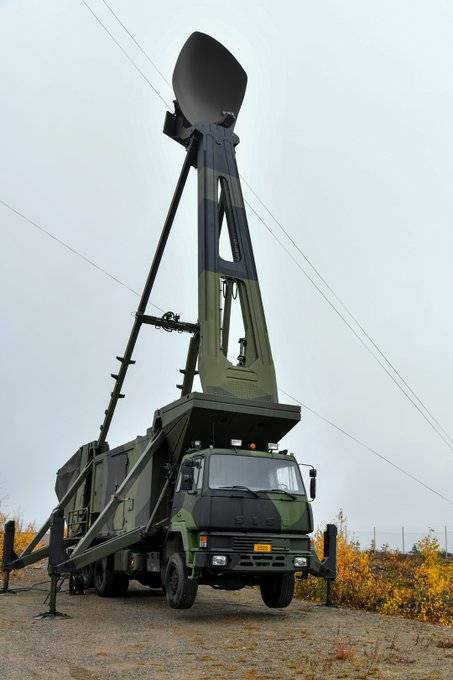
Three-coordinate mobile stations made in Sweden received the name LÄVA in the Finnish armed forces. They operate in the 2-4 GHz frequency range and are capable of detecting targets at ranges up to 180 km.
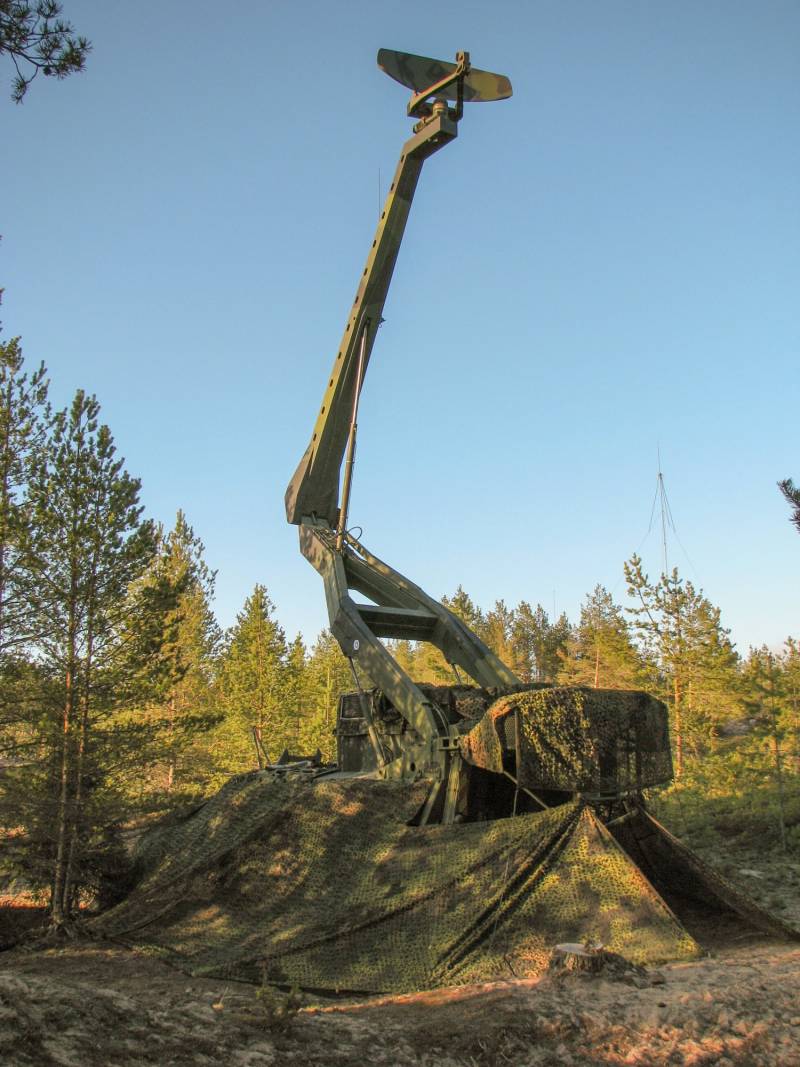
In the late 1970s, the KEVA78 radar was created in Finland. A number of sources say that this station has much in common with the French station TA-23, developed in the 1960s by Thomson-CSF.
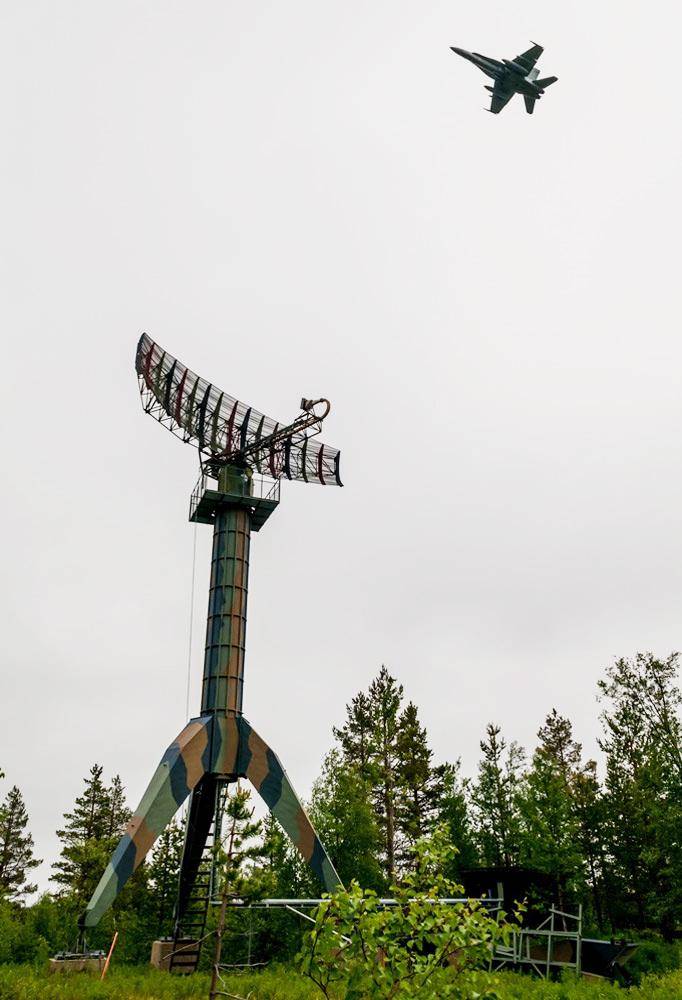
Antenna post radar KEVA78
The KEVA78 radar is mobile and transported by several trucks. The antenna is mounted on a mast about 15 m high, which makes it possible to detect targets flying at low altitude. The pulsed power is about 2 MW. Operating frequency range: 1-250 MHz. The maximum detection range is about 1 km. A total of 370 radars of this type were built. The last KEVA300 station was decommissioned in 18.
Finland currently operates five stationary TRS-22XX KAVA, supplied by Thomson-CSF in 1993-1995 and upgraded several years ago. All stations of this type are installed on concrete bases, their antennas are protected from adverse meteorological factors by radio-transparent domes.
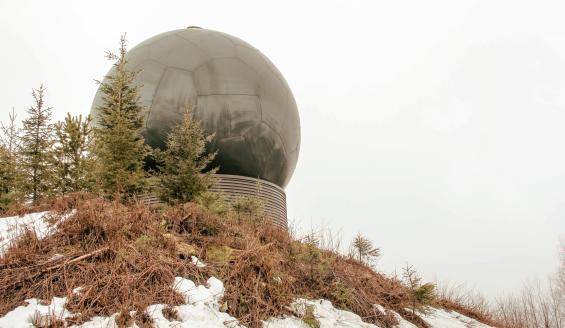
The TRS-22XX KAVA three-coordinate radar has a pulse power of up to 700 kW, operates in the 2,9-3,1 GHz frequency range and is capable of seeing large high-altitude objects at a distance of up to 470 km.
In May 2009, a contract was signed with Thales Raytheon Systems worth 200 million euros for the supply of 12 GM 403 mobile three-coordinate radars. All stations of this type were to be transferred before the end of 2015.
The GM 403 radar has a frequency range of 2,9-3,3 GHz and a detection range of large high-altitude targets up to 450 km. Radars GM 403 are based on the most modern element base and have high reliability, the ability to quickly upgrade and update software. Particular attention is paid to the characteristics of the detection of low-altitude targets in the conditions of electronic countermeasures. All radar equipment is placed in a container-type module and can be transported by S-130 aircraft.
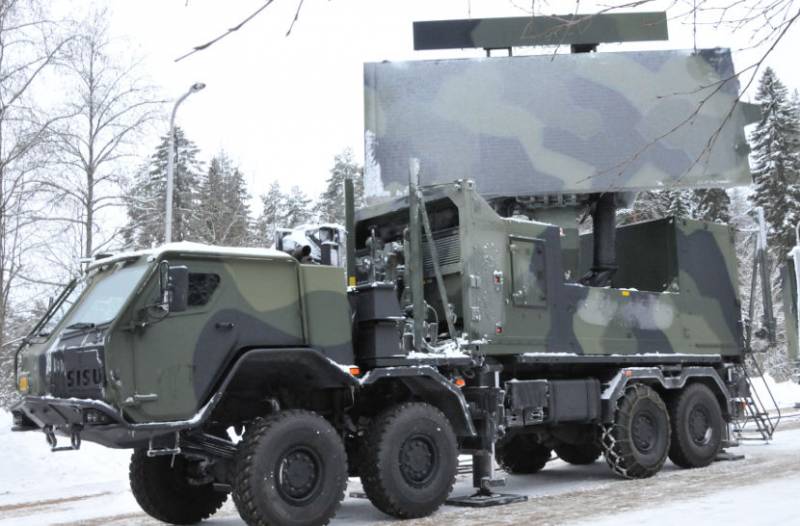
Radar GM 403
The Ground Master GM 403 radars are mounted on the chassis of the Finnish SISU E13TP vehicle with an 8x8 wheel arrangement. In Finland, Ground Master GM 403 radars form the backbone of the country's airspace monitoring system, replacing 18 obsolete Finnish-made radars. In the armed forces of Finland radar GM 403
received the name KEVA2010.
Object anti-aircraft missile systems
10 years after the end of World War II, it became clear to the Finnish military-political leadership that it was impossible to protect the capital region from air strikes with anti-aircraft guns alone. However, in the 1950s, Finland did not have the financial resources necessary to acquire a modern weapons. Such an opportunity appeared by the mid-1960s, and simultaneously with the acquisition of jet interceptors, a search began for an air defense system capable of fighting bombers outside the line of sight and adapted for long-term combat duty.
At a certain stage, the Finnish military was interested in the British Thunderbird medium-range air defense system. The complex, which entered service in 1958, had good data: an aimed launch range of 40 km and an altitude reach of 20 km. The main advantage of the British semi-active radar-guided anti-aircraft missile was the use of solid fuel, which made it easier and cheaper to operate. This was a significant achievement, the Soviet medium and long-range anti-aircraft missiles created in those years had liquid-propellant jet engines that ran on toxic fuel and an aggressive oxidizer.
In the late 1960s, a preliminary agreement was reached on the supply of a British air defense system, and the British handed over a set of equipment for the preparation of calculations, including training anti-aircraft missiles of the Thunderbird Mk I modification, without fuel and warheads.
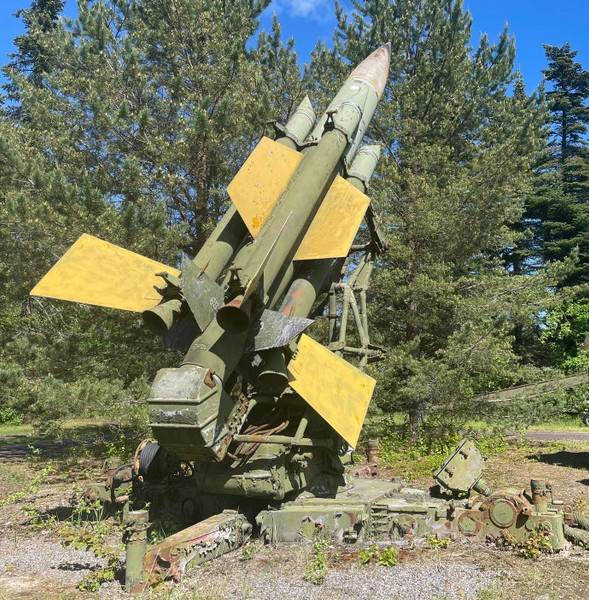
Training anti-aircraft missile Thunderbird Mk I at the Air Defense Museum in Tuusula
In 1968, the production of an improved Thunderbird Mk II model was already underway, and the British company English Electric was seriously counting on a large contract. However, at the last moment, the Finns refused to purchase a British air defense system. For what reason this happened, I could not install. Perhaps the parties did not agree on a price. Currently, individual elements of the Thunderbird Mk I air defense system are on display at the Air Defense Museum in Tuusula.
In 1980, the Finnish Air Defense Forces were reinforced by the Soviet S-125M Pechora air defense system with 5V27 solid-fuel missiles. This very successful low-altitude complex had a zone of destruction in range of 2,5-22 km, and in height - 0,02-14 km.
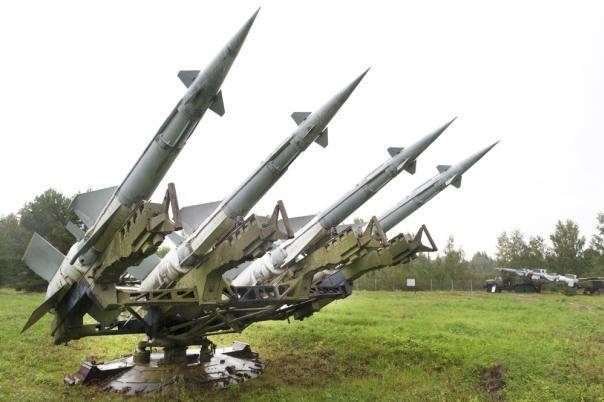
Launcher ZRK C-125M in the Museum of Air Defense in Tuusula
In total, Finland acquired three anti-aircraft divisions and 140 missiles. The first S-125M division, which received the Finnish designation Ito 79, was deployed in the vicinity of Helsinki. In 1984, with Soviet technical support, the Finnish S-125Ms were upgraded. The service of the S-125M air defense system in Finland ended in 2000. Subject to modernization and refurbishment, the Finnish Pechora complexes could still serve.
After the collapse of the USSR, military-technical cooperation between the countries continued for some time. In 1997, three batteries of the Buk-M1 air defense system (18 self-propelled guns and ROMs, 288 9M38 missiles) were delivered to Finland to pay off the state debt of the USSR. At that time, it was a completely modern multi-channel complex capable of hitting targets at a distance of up to 35 km and an altitude of 22 km.
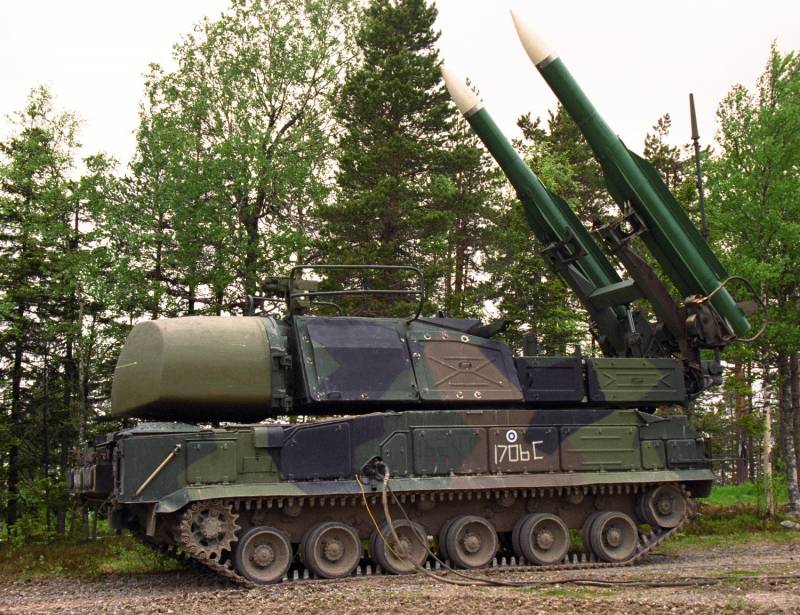
Self-propelled firing system 9A310M1 from the Finnish air defense system "Buk-M1"
Although the Buk-M1 mobile air defense system was created for the air defense of the Ground Forces, in Finland it was used as an object-based medium-range air defense system. The Buk-M1 anti-aircraft missile regiment was permanently stationed in the northern suburbs of Helsinki. Anti-aircraft batteries were not on permanent duty, but one battery was constantly in readiness for immediate exit to positions.
The service of the Buk-M1 air defense system in the armed forces of Finland turned out to be short-lived. In 2008, it was announced that Russian systems were being abandoned. This was motivated by the fact that the air defense systems supplied by Russia, which had served only 10 years, no longer meet modern requirements and are too vulnerable to Russian electronic warfare, and the control systems of the complexes can be easily taken under control from the outside. Given the events in Ukraine, where the Buks are actively used by the warring parties, these statements are completely far-fetched and do not correspond to reality.
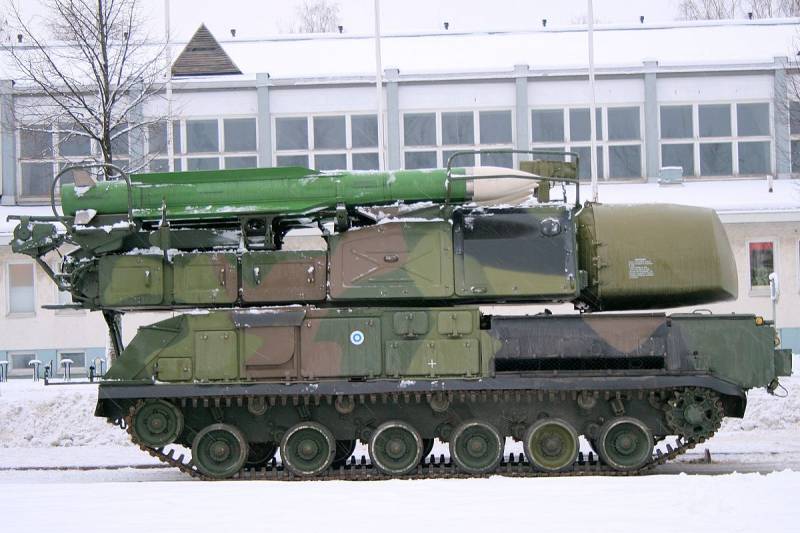
There is no clarity regarding the future fate of the Finnish Buk-M1 air defense systems. One self-propelled firing system is on display at the Air Defense Museum in Tuusula. According to unconfirmed reports, elements of the Buk-M1 air defense system that were decommissioned in Finland were delivered to the American training grounds Eglin, Nellis and Fort Stewart.
Shortly after abandoning the Buk-M1 air defense system, Finland acquired the NASAMS II medium-range air defense system, developed by the Norwegian company Kongsberg Gruppen together with the American Raytheon. The $458 million contract, which began in 2009, provided for the delivery of three anti-aircraft batteries. In the armed forces of Finland, NASAMS II received the designation Ito 12.
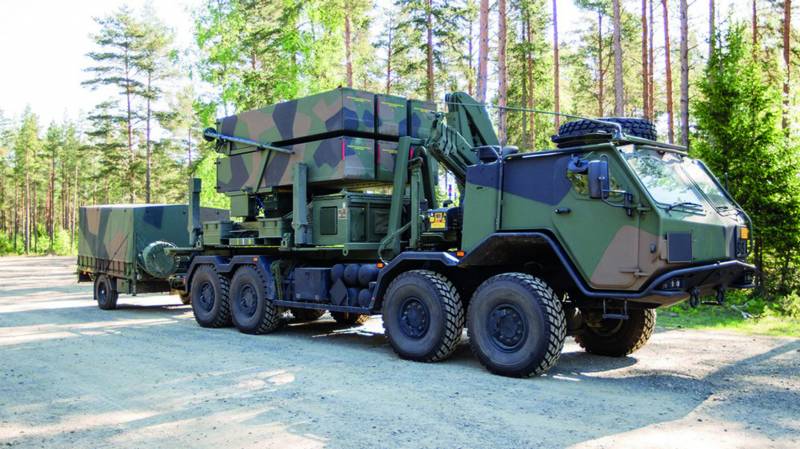
Launcher SAM Ito 12 on the transporter Sisu E13TP
The NASAMS II air defense system is capable of effectively combating maneuvering aerodynamic targets at a range of 2,5–40 km and an altitude of 0,03–16 km. As a means of destruction, specially modified long-range aviation missiles AIM-120 AMRAAM.
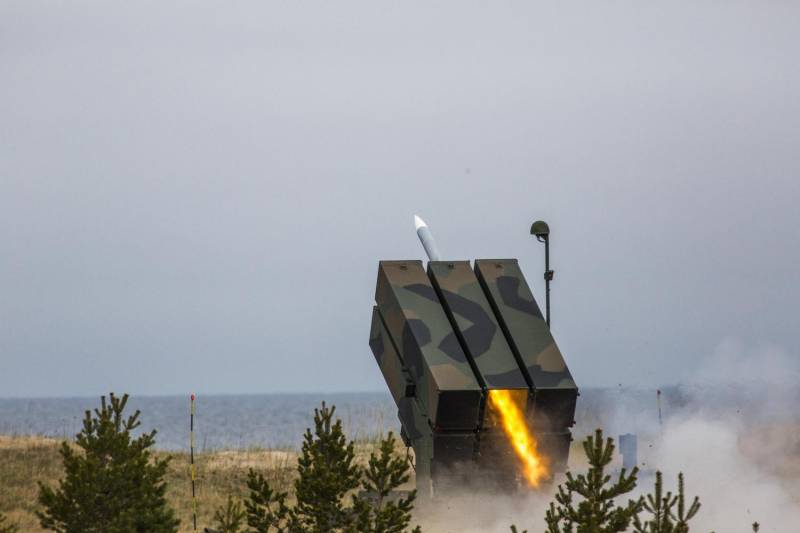
To detect air targets and control the fire of an anti-aircraft battery, a multifunctional three-coordinate radar AN / MPQ-64 F2 X-band is used, with a detection range of 75 km.
Finland received expanded complexes with increased fire performance and a large number of target designation and detection tools. The battery of the Finnish NASAMS II air defense systems includes: 6 AN / TPQ-64 radars instead of three and 12 launchers instead of 9, an MSP500 optoelectronic reconnaissance station on the chassis of an off-road vehicle, an FDC battery control center and a GBADOC mobile communications center that allows you to integrate into the upper echelon network to exchange information.
The MSP500 optoelectronic reconnaissance station is equipped with a high-resolution television camera, a thermal imager and a laser rangefinder, which makes it possible to use anti-aircraft missiles without turning on the radar. The AN / MPQ-64 radar, launchers and optoelectronic stations can be deployed at a distance of up to 2,5 km from the control center. One NASAMS battery is capable of simultaneously tracking 72 targets. Each launcher has 6 TPKs with missiles, thus, the battery has 72 anti-aircraft missiles ready for use.
Experts note that NASAMS II is a fairly advanced and effective air defense system that poses a great danger to any air enemy. During the development of this air defense system, much attention was paid to increasing stealth, noise immunity and survivability in modern combat conditions. To do this, the AN / MPQ-64 radar has a mode with a highly directional beam and an advanced radiation control function, which reduces the risk of disclosing the position of the complex.
Prospects for the development of air defense in Finland
The central command post of the Air Force-Air Defense of Finland is located at the Tikkakoski-Jyväskylä air base, regional command posts are located at the air bases of Rovaniemi and Kuopio. At present, a network of permanently operating radars has been deployed in Finland, providing a continuous radar field at high and medium altitudes over the entire territory of the country.
Although the application for joining the North Atlantic Alliance was submitted in 2022, as part of mutual cooperation since 2006, Finnish radars have been integrated into the NATO air defense system. The exchange of information is carried out using equipment operating in the Link-16 format.
Currently, the Ministry of Defense of Finland is considering the acquisition of additional radars capable of effectively detecting cruise and ballistic missiles, as well as working in conjunction with promising long-range air defense systems. A specific type of radar has not yet been selected, but the media write that, most likely, it will be the Israeli Elta ELM-2084 or the American AN / TPS-77 station from Lockheed Martin.
In 2023, the Finnish Defense Directorate must make a choice regarding the acquisition of a long-range air defense system worth more than $1 billion. According to the Finnish military, they urgently need to be armed with several anti-aircraft missile batteries with a range of destruction of aerodynamic targets of about 100 km. Among the possible applicants were considered SAMP-T air defense systems with Aster-30 and Patriot PAC-3 + missiles with Guidance Enhanced Missile-TBM missiles (mainly for hitting air targets), Missile Segment Enhancement anti-missiles. However, at present, the systems offered by the Israeli companies Israel Aerospace Industries and Rafael Advanced Systems are considered the main favorites.
The Barak-MX system from IAI with the LRAD ER missile and radar equipment from Elta is capable of fighting air targets at a distance of up to 150 km, the reach in height is 30 km.
The David's Sling system, developed by Rafael and Raytheon, also contains Elta radar equipment. To defeat aerodynamic and ballistic targets, Stunner and SkyCeptor missiles are used. Depending on the missile used and the type of target, the firing range is 40–300 km.
To be continued ...
Information